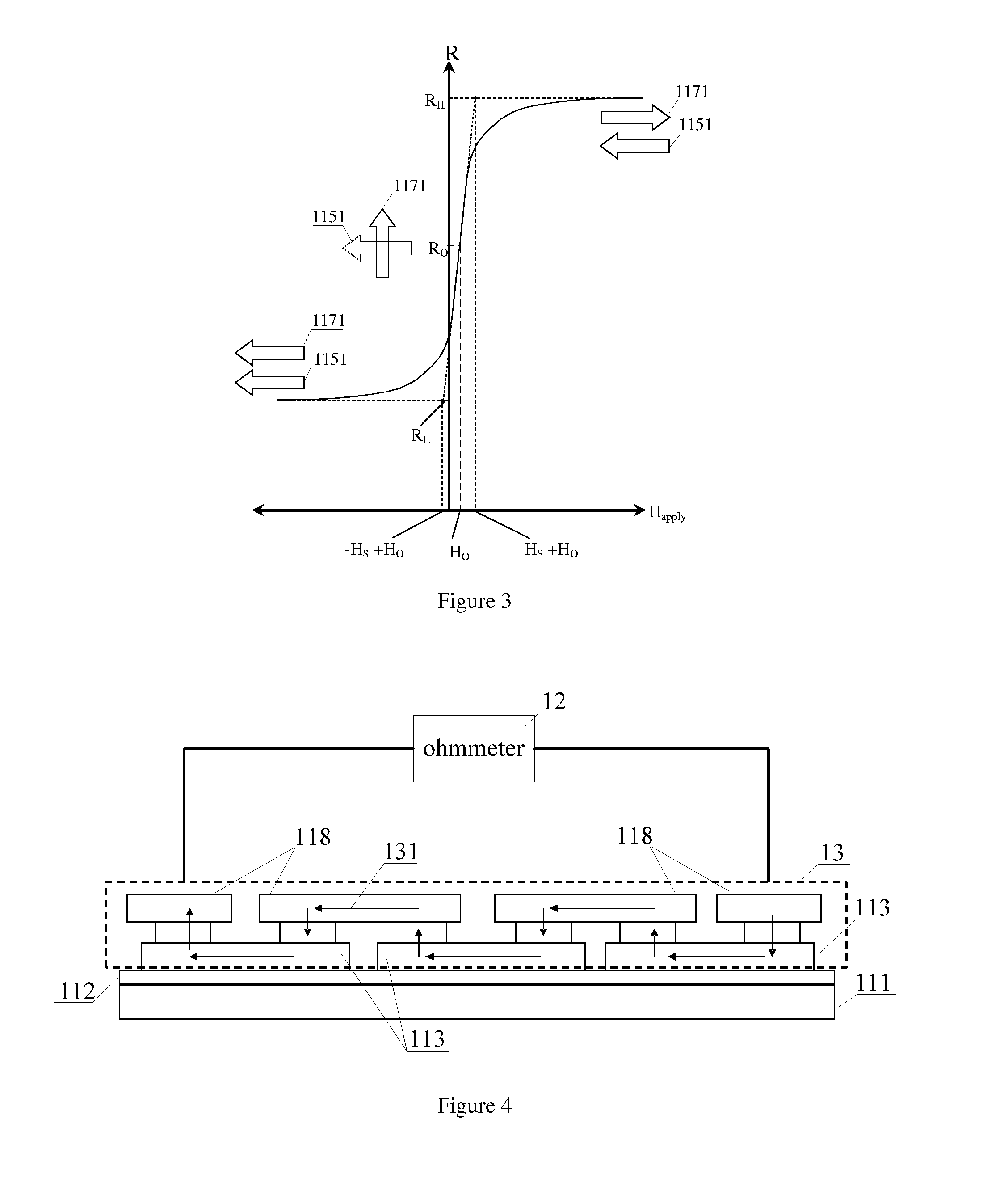Magnetoresistive Gear Tooth Sensor
- Summary
- Abstract
- Description
- Claims
- Application Information
AI Technical Summary
Benefits of technology
Problems solved by technology
Method used
Image
Examples
Embodiment Construction
[0062]The present invention will be further described along with the appended figures implementations that are presented below.
First Implementation:
[0063]FIG. 1 shows a schematic diagram of a first embodiment of an MTJ element 11. The first embodiment of an MTJ element 11 is a multilayer film structure, shown in FIG. 1, which comprises sequentially deposited on the substrate 111, an insulating layer 112, a bottom electrode layer 113, a pinning layer 114, a pinned layer 115, a tunnel barrier layer 116, a ferromagnetic free layer 117, and a top electrode layer 118. Pinned magnetic layer 115 and ferromagnetic free layer 117 are comprised of ferromagnetic metals and alloys including Fe, Co, Ni, FeCo, FeNi, FeCoB, or FeCoNi. The pinned layer 115 may be a trilayer ferromagnetic layer, in which two ferromagnetic layer are separated by a Ru layer, for example, a FeCo / Ru / FeCo trilayer. Pinning layer 114 and pinned layer 115 are exchange coupled so that the direction of the magnetic moment 11...
PUM
 Login to View More
Login to View More Abstract
Description
Claims
Application Information
 Login to View More
Login to View More - R&D
- Intellectual Property
- Life Sciences
- Materials
- Tech Scout
- Unparalleled Data Quality
- Higher Quality Content
- 60% Fewer Hallucinations
Browse by: Latest US Patents, China's latest patents, Technical Efficacy Thesaurus, Application Domain, Technology Topic, Popular Technical Reports.
© 2025 PatSnap. All rights reserved.Legal|Privacy policy|Modern Slavery Act Transparency Statement|Sitemap|About US| Contact US: help@patsnap.com



